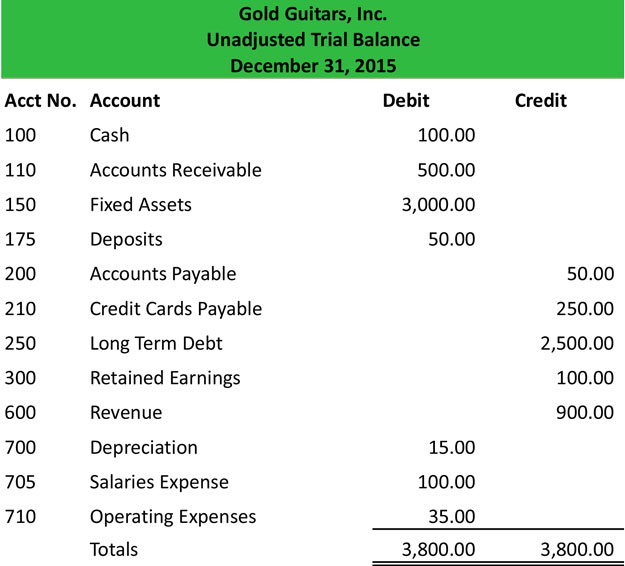Definition: A trial balance is a listing of the chart of accounts with their current balances. One use of trial balances is to help management quickly review the balances of each account without going through the steps of preparing financial statements. The most common use for a trial balance, however, is to start the year-end accounting process.
What Does Unadjusted Trial Balance Mean?
The complete year-end process starts with the general ledger. First, the account balances from the general ledger and subsidiary ledgers are transferred to a trial balance. Next, these balances are listed in balance sheet and income statement order with their debit and credit balances.
The beginning trial balance or unadjusted trial balance simply lists the unadjusted balances for each account. What I mean by unadjusted balances is that none of the year-end balances have been adjusted by year-end adjusting journal entries yet. Unadjusted trial balance numbers are simply the account balances from the general ledger.
After an unadjusted trial balance has been adjusted with the year-end closing entries, it is considered an adjusted trial balance. The year-end adjusting journal entries include booking prepaid and accrual accounts, recording dividends issued, and the closing entries for the year of the year. These adjusted account balances are then used to create the year-end financial statements.
Example
Here is an example of an unadjusted trial balance. Usually the debit and credit balances of each account are listed to the right of the account name. Also, a full heading and account numbers usually appear on the unadjusted trial balance.

Download this accounting example in excel.


